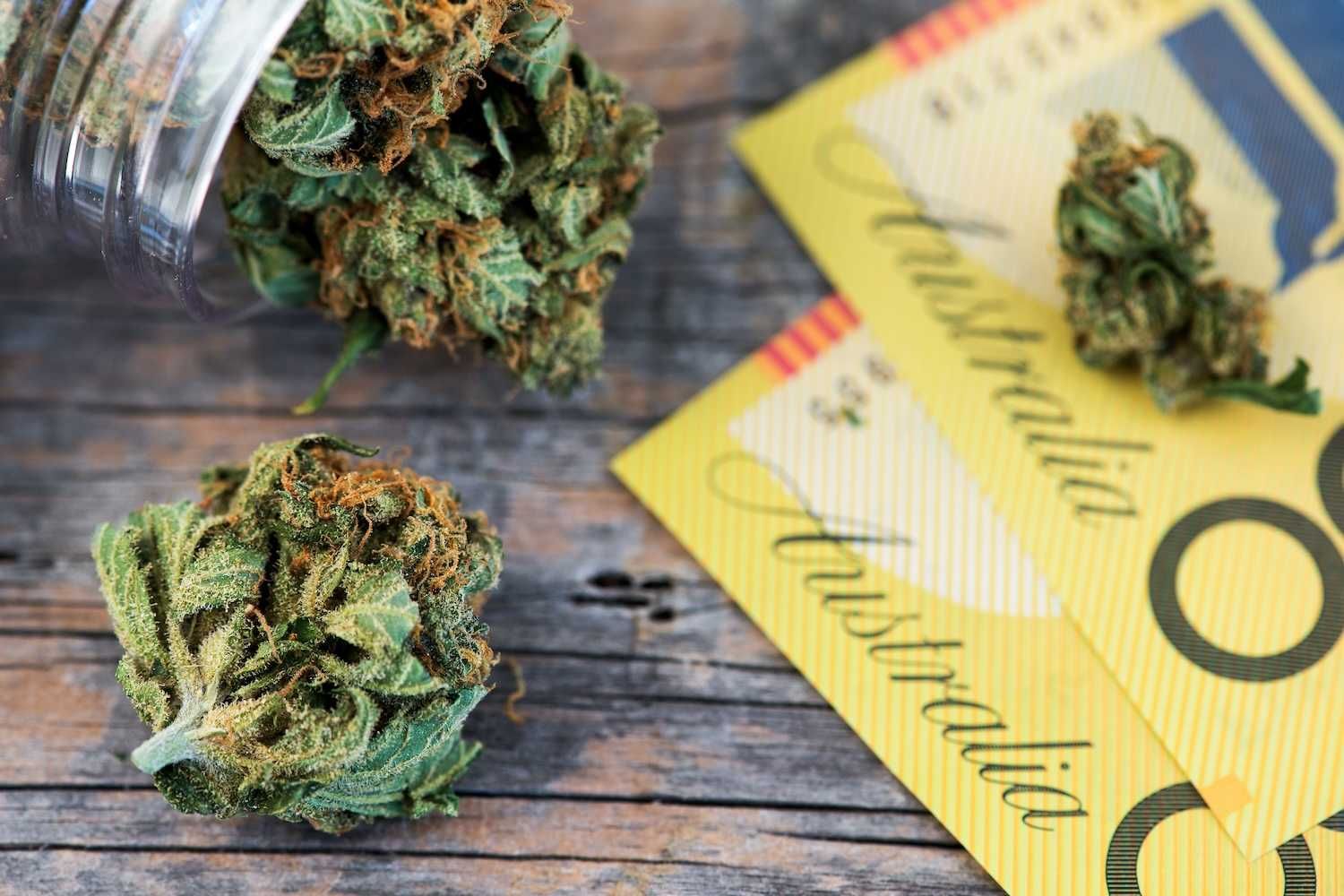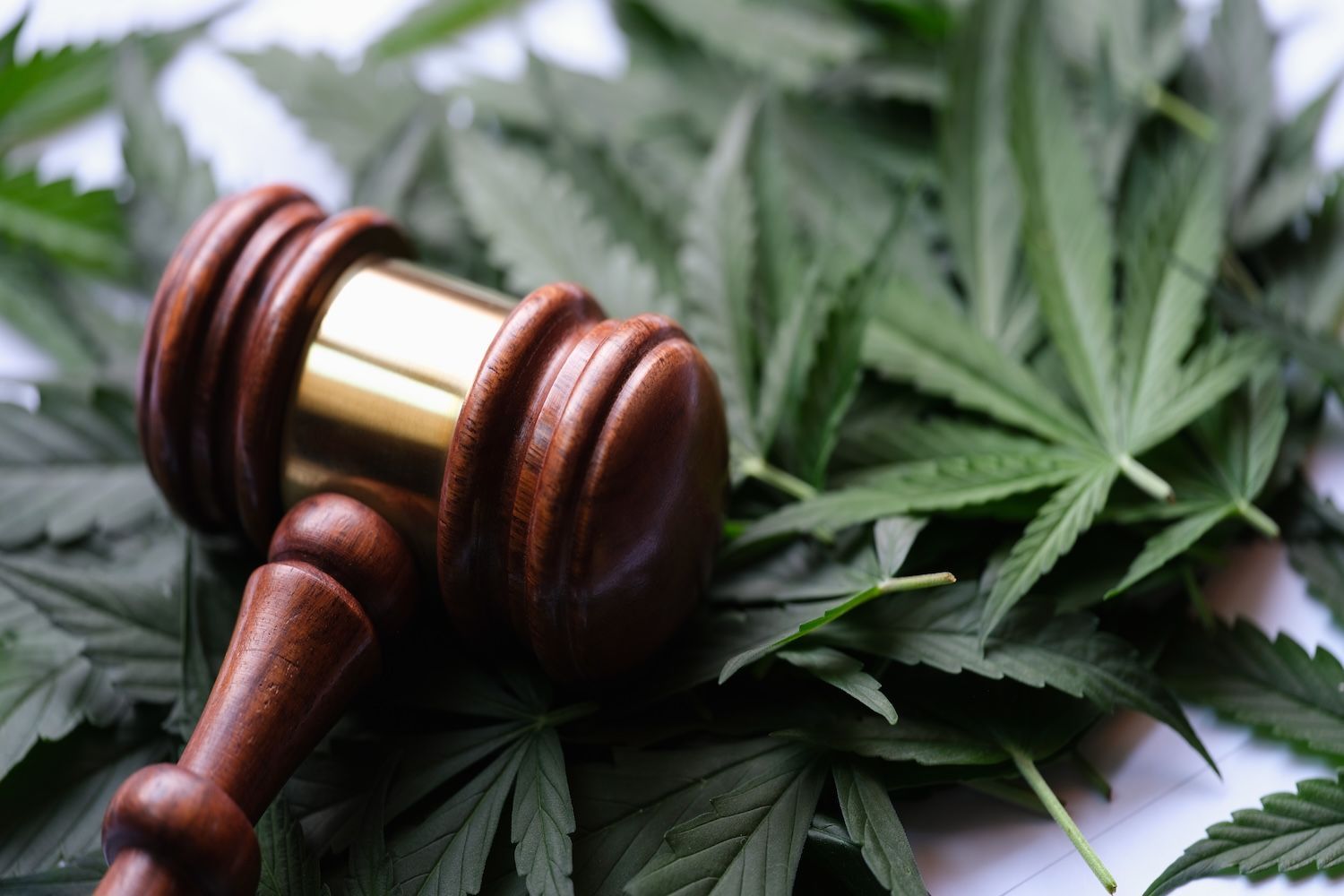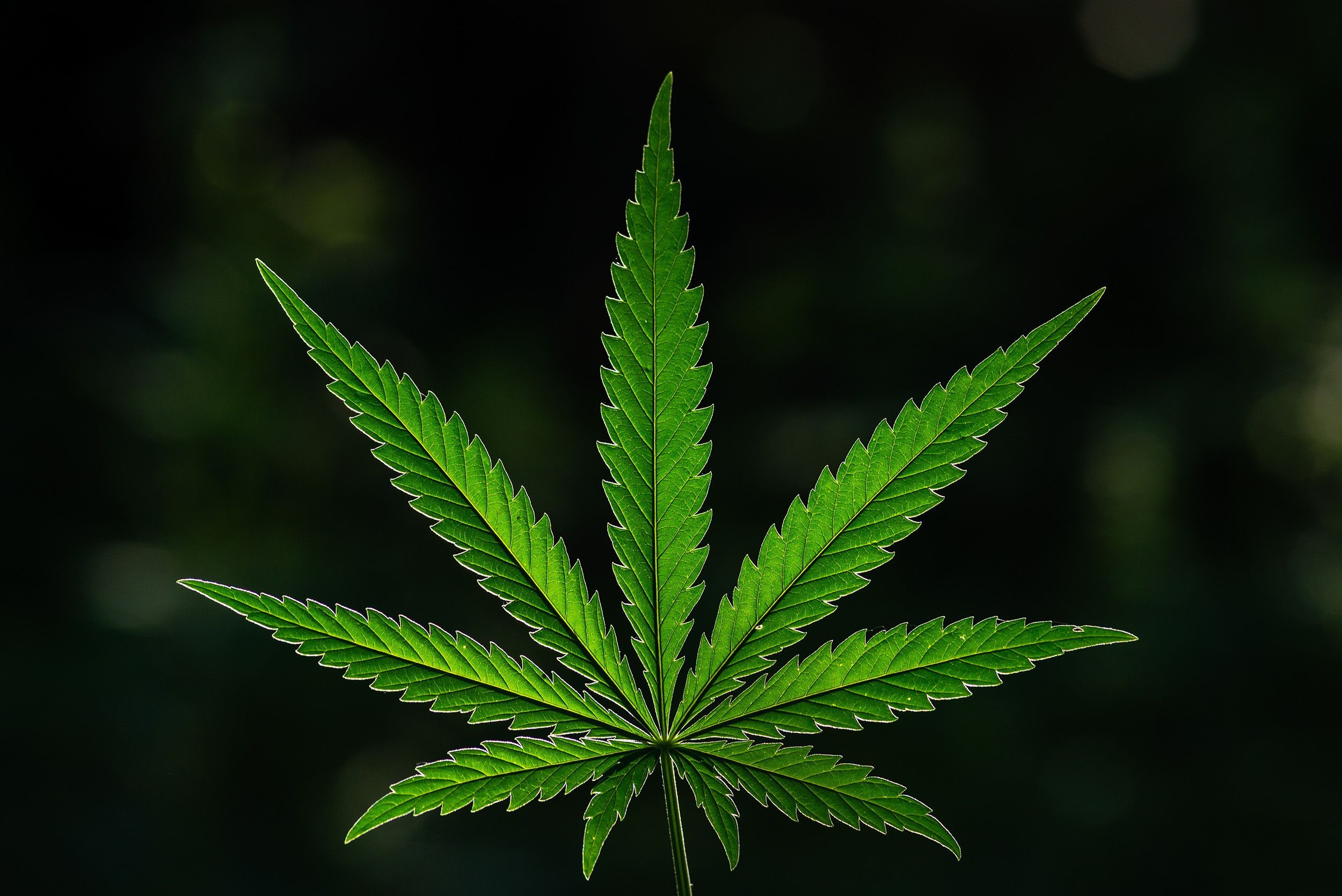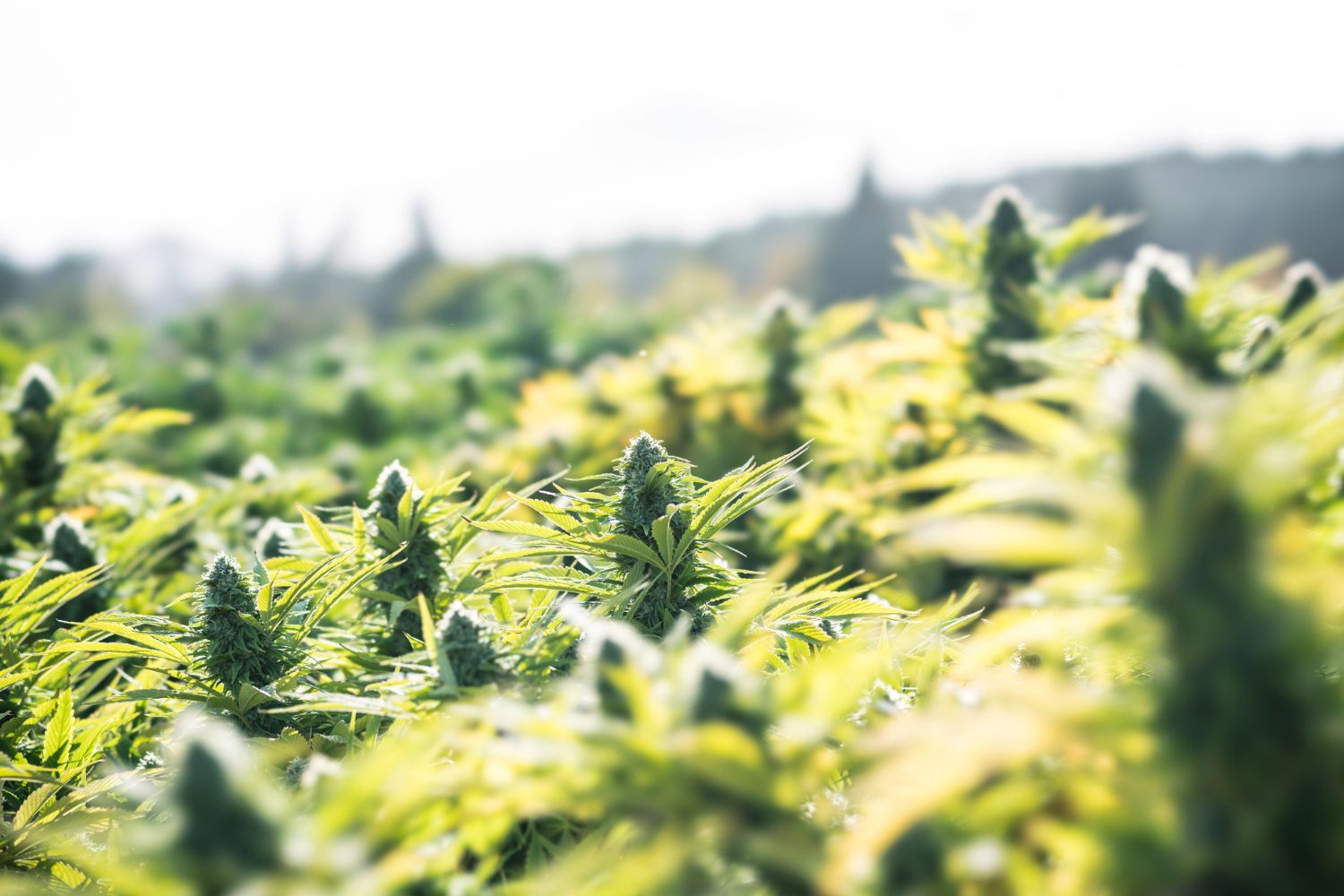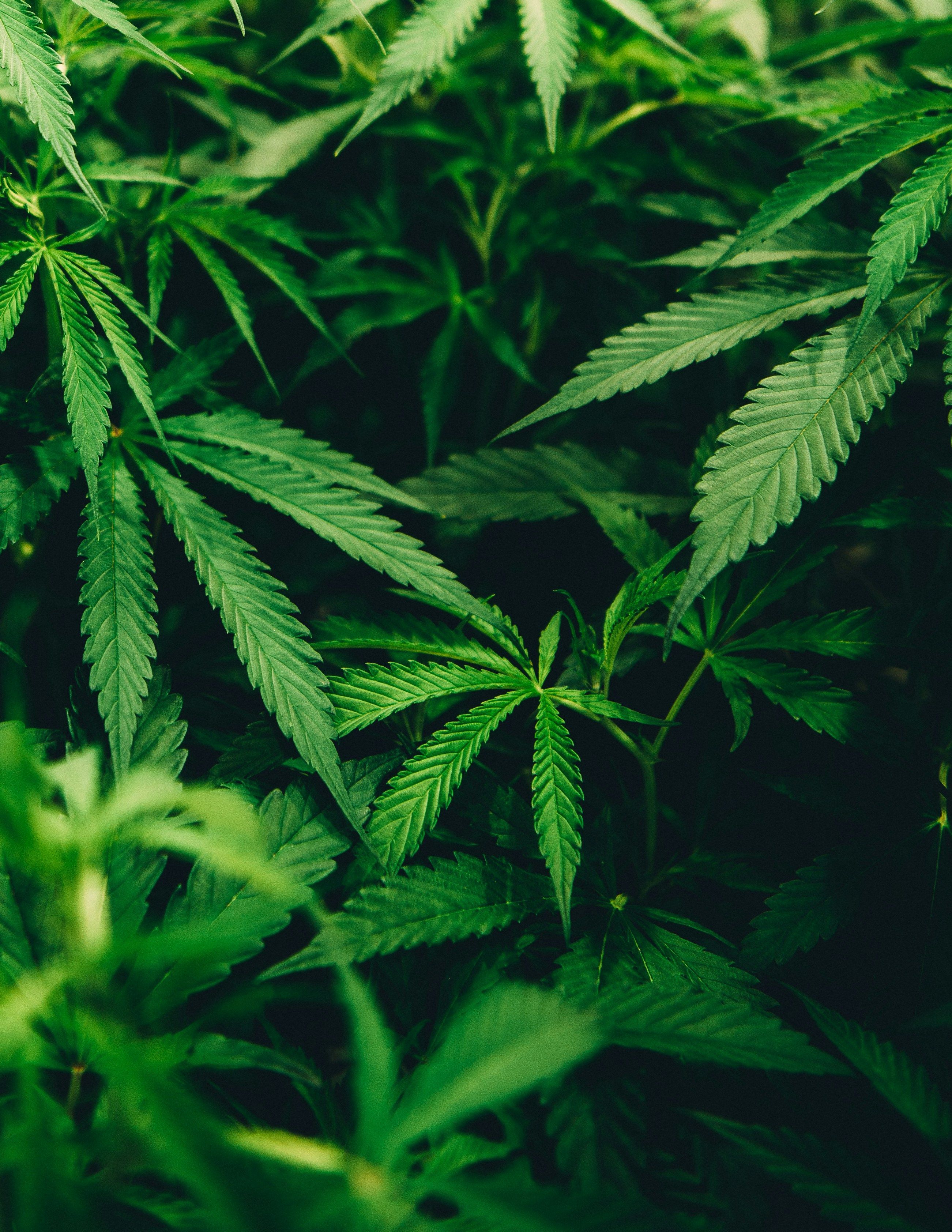Continues Execution of Hub Strategy with Harvest Acquisition
U.S. Leader with 155 Retail Dispensaries
3.5 Million Square Feet of Cultivation and Processing Capacity
Trulieve Cannabis Corp. ("Trulieve" or the "Company") (CSE: TRUL) (OTCQX: TCNNF), a leading and top-performing cannabis company in the United States today announced its results for the quarter ended September 30 2021.
Q3 2021 Financial and Operational Highlights
- Net revenue increased 64% year-over-year to $224.1 million .
- Gross profit of $153.9 million and gross margin of 68.7% compared to gross profit of $102.2 million and gross margin of 75.0% in the third quarter 2020.
- Net income of $18.6 million , impacted by $16.4 million of one-time compensation and transaction costs primarily associated with the Harvest acquisition.
- Adjusted EBITDA 1 of $98.0 million , or 43.7% of revenue.
- Trulieve and Harvest combined third quarter revenue of approximately $316 million , net loss of approximately $9.8 million and adjusted EBITDA of approximately $121 million . 2
- Positive cash flow from operations of $75.1 million for the nine months ended September 30, 2021 .
- Cash of $213.6 million as of September 30, 2021 .
- Opened 7 new dispensaries, increasing retail footprint to 101 retail locations nationwide.
- Began first cultivation operations in the state of West Virginia .
- Closed the acquisition of the equity of Keystone Shops in Pennsylvania .
- Completed the acquisition of a dispensary license and commenced wholesale operations in Massachusetts .
- Received a notice of intent to award a Class 1 production license in Georgia .
- Launched product portfolio: Cultivar Collection, Momenta, Muse, and Sweet Talk.
- Launched sale of hydrocarbon extraction concentrates with first available products in the state of Florida .
| 1. See "Non-GAAP Financial Measures" below for additional information and a reconciliation to GAAP. |
| 2. Q3 2021 combined results represent the simple addition of Trulieve's reported results for the quarter ended September 30, 2021 and preliminary estimated Harvest results for the quarter ended September 30, 2021. These unaudited combined figures are provided for illustrative purposes only and may differ when reported on a consolidated basis or when presented on a proforma basis in accordance with SEC rules. |
Recent Events
- Completed the acquisition of Harvest Health & Recreation Inc. on October 1, 2021 .
- Closed $350 million private placement of 8% senior secured notes due October 2026 , representing industry leading terms for U.S. plant touching cannabis operators.
- Retired $270.1 million of high-cost and short-term Harvest debt, including debt due upon change in control.
- Retired $18 million in Trulieve notes payable.
- Opened first medical dispensaries in West Virginia with new retail locations in Morgantown and Weston .
- Converted 14 former Harvest dispensaries to Trulieve branded retail locations and opened 3 Trulieve locations in Florida .
- Currently operate 155 retail dispensaries and 3.5 million square feet of cultivation and processing capacity in the United States .
"Our third quarter results underscore our commitment to operational excellence and adherence to our stated goals," said Kim Rivers , Trulieve CEO. "We continue to deliver on our promise to pursue profitable growth while executing on our hub strategy."
Rivers continued, "Our team closed the Harvest acquisition in under five months while simultaneously meeting expansion targets in several markets. We are excited to keep the momentum going into 2022 as we fully integrate Harvest while further building scale and depth in our cornerstone markets."
Financial Highlights
| Results of Operations | For the Three Months Ended | For the Nine Months Ended | ||||||||
| (Figures in millions | September | September | change | September | September | change | ||||
| Total Revenue | $ | 224.1 | $ | 136.3 | 64% | $ | 633.0 | $ | 353.1 | 79% |
| Gross Profit | $ | 153.9 | $ | 102.2 | 51% | $ | 433.7 | $ | 266.5 | 63% |
| Gross Profit % | | 69% | | 75% | -6% | | 69% | | 75% | -7% |
| Operating Expenses | $ | 87.7 | $ | 42.7 | 105% | $ | 218.6 | $ | 112.1 | 95% |
| Operating Expenses % | | 39% | | 31% | 8% | | 35% | | 32% | 3% |
| Net income | $ | 18.6 | $ | 17.4 | 7% | $ | 89.6 | $ | 60.0 | 49% |
| Adjusted EBITDA | $ | 98.0 | $ | 68.7 | 43% | $ | 283.7 | $ | 178.7 | 59% |
| | | | | | | | | | | |
The Company's Form 10-Q for the quarter ended September 30, 2021 , is available on the SEC's website or at https://investors.trulieve.com/financial-information/quarterly-results . The Company's Management Discussion and Analysis for the period and the accompanying financial statements and notes are available under the Company's profile on SEDAR and on its website at https://investors.trulieve.com/financial-information/quarterly-results .
This news release is not in any way a substitute for reading those financial statements, including the notes to the financial statements.
Conference Call
The Company will host a conference call and live audio webcast on November 15 , 2021 at 8:30 A.M. Eastern time , to discuss its third quarter 2021 financial results.
All interested parties can join the conference call by dialing 1-855-669-9657, conference ID: 10161240. Please dial in 15 minutes prior to the call to secure a line. The conference call will be archived for replay until November 22, 2021. To access the archived conference call, please dial 1-855-669-9658 and enter the encore code 10161240.
A live audio webcast of the conference call will be available at: https://investors.trulieve.com/events-presentations
Please connect at least 15 minutes prior to the conference call to ensure adequate time for any software download that may be required to join the webcast. An archived replay of the webcast will be available for 90 days by clicking the link above.
About Trulieve
Trulieve is an industry leading, vertically integrated cannabis company and multi-state operator in the U.S. operating in 11 states, with leading market positions in Arizona , Florida , and Pennsylvania . Trulieve is poised for accelerated growth and expansion, building scale in retail and distribution in new and existing markets through its hub strategy. By providing innovative, high-quality products across its brand portfolio, Trulieve delivers optimal customer experiences and increases access to cannabis, helping patients and customers to live without limits. Trulieve is listed on the Canadian Securities Exchange under the symbol TRUL and trades on the OTCQX market under the symbol TCNNF.
To learn more about Trulieve, visit https://www.trulieve.com/ .
Non-GAAP Financial Measures
Our management uses financial measures that are not in accordance with generally accepted accounting principles in the United States , or GAAP, in addition to financial measures in accordance with GAAP to evaluate our operating results. These non-GAAP financial measures should be considered supplemental to, and not a substitute for, our reported financial results prepared in accordance with GAAP. Our management uses adjusted EBITDA to evaluate our operating performance and trends and make planning decisions. Our management believes adjusted EBITDA helps identify underlying trends in our business that could otherwise be masked by the effect of the items that we exclude. Accordingly, we believe that adjusted EBITDA provides useful information to investors and others in understanding and evaluating our operating results, enhancing the overall understanding of our past performance and future prospects, and allowing for greater transparency with respect to key financial metrics used by our management in its financial and operational decision-making.
Adjusted EBITDA reported by Trulieve excludes from net income as reported interest, share-based compensation, tax, depreciation, amortization, acquisition and transaction costs, COVID-related expenses, fair value step-up of inventory from acquisitions, integration and transition costs, non-cash expenses and other income. Preliminary Adjusted EBITDA calculated by Harvest Health & Recreation Inc. excludes from net loss as tabulated interest, share-based compensation, tax, depreciation, amortization, acquisition and transaction costs, COVID-related expenses, fair value step-up of inventory from acquisitions, integration and transition costs, non-cash expenses and other expense. The financial measures noted above are metrics that have been adjusted from the GAAP net income measure in an effort to provide readers with a normalized metric in making comparisons more meaningful across the cannabis industry, as well as to remove non-recurring, irregular and one-time items that may otherwise distort the GAAP net income measure.
Reconciliation of Non-GAAP Adjusted EBITDA
The following table presents a reconciliation of GAAP net income (loss) to non-GAAP Adjusted EBITDA, for each of the periods presented for Trulieve:
| | | Three Months Ended September 30, | | | Nine Months Ended September 30, | | ||||||||||
| | | 2021 | | | 2020 | | | 2021 | | | 2020 | | ||||
| (dollars in millions) | | | | | | | ||||||||||
| Net income and comprehensive income | | $ | 18.6 | | | $ | 17.4 | | | $ | 89.6 | | | $ | 60.0 | |
| Add impact of: | | | | | | | | | | | | | ||||
| Interest expense, net | | | 6.1 | | | | 5.4 | | | | 20.7 | | | | 16.6 | |
| Provision for income taxes | | | 41.6 | | | | 25.9 | | | | 105.3 | | | | 67.1 | |
| Depreciation and amortization | | | 7.7 | | | | 3.3 | | | | 19.8 | | | | 8.6 | |
| Depreciation included in cost of goods sold | | | 5.7 | | | | 2.5 | | | | 14.4 | | | | 7.4 | |
| EBITDA | | | 79.8 | | | | 54.6 | | | | 249.7 | | | | 159.7 | |
| Acquisition and transaction costs | | | 11.1 | | | | — | | | | 14.3 | | | | — | |
| COVID related expenses | | | 0.5 | | | | 2.9 | | | | 6.0 | | | | 6.0 | |
| Share-based compensation and related premiums | | | 4.9 | | | | 0.5 | | | | 6.4 | | | | 2.2 | |
| Inventory step up, fair value | | | 0.7 | | | | — | | | | 3.2 | | | | — | |
| Integration and transition costs | | | 0.8 | | | | — | | | | 2.7 | | | | — | |
| Other non-recurring costs | | | 0.2 | | | | — | | | | 1.6 | | | | — | |
| Other expense (income), net | | | (0.1) | | | | 10.8 | | | | (0.4) | | | | 10.8 | |
| Total adjustment | | | 18.2 | | | | 14.2 | | | | 34.0 | | | | 19.0 | |
| Adjusted EBITDA | | $ | 98.0 | | | $ | 68.7 | | | $ | 283.7 | | | $ | 178.7 | |
The following table presents a reconciliation of GAAP net income (loss) to non-GAAP Adjusted EBITDA, for each of the periods presented for Trulieve and Harvest:
| | | Three Months Ended September 30, 2021 | | |||||||||||||
| | | Trulieve | | | Harvest 3 | | | Eliminations | | | Combined | | ||||
| (dollars in millions) | | | | | | | ||||||||||
| Net income and comprehensive income | | $ | 18.6 | | | $ | (25.6) | | | $ | (2.9) | | | $ | (9.8) | |
| Add impact of: | | | | | | | | | | | | | ||||
| Interest expense, net | | | 6.1 | | | | 9.8 | | | | — | | | | 15.9 | |
| Provision for income taxes | | | 41.6 | | | | 4.7 | | | | — | | | | 46.3 | |
| Depreciation and amortization | | | 7.7 | | | | 3.0 | | | | — | | | | 10.7 | |
| Depreciation included in cost of goods sold | | | 5.7 | | | | 1.0 | | | | — | | | | 6.7 | |
| EBITDA | | | 79.8 | | | | (7.1) | | | | (2.9) | | | | 69.9 | |
| Acquisition and transaction costs | | | 11.1 | | | | 24.4 | | | | — | | | | 35.5 | |
| COVID related expenses | | | 0.5 | | | | 0.1 | | | | — | | | | 0.6 | |
| Share-based compensation and related premiums | | | 4.9 | | | | 1.9 | | | | — | | | | 6.8 | |
| Inventory step up, fair value | | | 0.7 | | | | — | | | | — | | | | 0.7 | |
| Integration and transition costs | | | 0.8 | | | | — | | | | — | | | | 0.8 | |
| Other non-recurring costs | | | 0.2 | | | | — | | | | — | | | | 0.2 | |
| Other expense (income), net | | | (0.1) | | | | 7.0 | | | | — | | | | 6.9 | |
| Total adjustment | | | 18.2 | | | | 33.3 | | | | — | | | | 51.6 | |
| Adjusted EBITDA | | $ | 98.0 | | | $ | 26.3 | | | $ | (2.9) | | | $ | 121.4 | |
| 3. Harvest results are preliminary unaudited amounts which do not include the impacts of alignment of accounting policies, methods and estimates nor any impact of purchase accounting. These amounts may differ significantly when reported on a proforma basis in future filings. |
Forward-Looking Statements
This news release includes forward-looking information and statements within the meaning of the Private Securities Litigation Reform Act of 1995. These forward looking statements relate to the Company's expectations or forecasts of business, operations, financial performance, prospects, and other plans, intentions, expectations, estimates, and beliefs and include statements regarding the Company's expected financial performance for fiscal 2021, its plans for expansion, the scope and timing of adoption of cannabis in the U.S. and potential acquisitions and expansion of the Company's operations. Words such as "expects", "continue", "will", "anticipates" and "intends" or similar expressions are intended to identify forward-looking statements. These forward-looking statements are based on the Company's current projections and expectations about future events and financial trends that management believes might affect its financial condition, results of operations, business strategy and financial needs, and on certain assumptions and analysis made by the Company in light of the experience and perception of historical trends, current conditions and expected future developments and other factors management believes are appropriate. Forward-looking information and statements involve and are subject to assumptions and known and unknown risks, uncertainties, and other factors which may cause actual events, results, performance, or achievements of the Company to be materially different from future events, results, performance, and achievements expressed or implied by forward-looking information and statements herein, including, without limitation, the risks discussed under the heading "Risk Factors" in our Annual Report on Form 10-K for the year ended December 31, 2020 and in our periodic reports subsequently filed with the United Sates Securities and Exchange Commission and in the Company's filings on SEDAR at www.sedar.com . Although the Company believes that any forward-looking information and statements herein are reasonable, in light of the use of assumptions and the significant risks and uncertainties inherent in such information and statements, there can be no assurance that any such forward-looking information and statements will prove to be accurate, and accordingly readers are advised to rely on their own evaluation of such risks and uncertainties and should not place undue reliance upon such forward-looking information and statements. Any forward-looking information and statements herein are made as of the date hereof and, except as required by applicable laws, the Company assumes no obligation and disclaims any intention to update or revise any forward-looking information and statements herein or to update the reasons that actual events or results could or do differ from those projected in any forward looking information and statements herein, whether as a result of new information, future events or results, or otherwise.
SOURCE Trulieve Cannabis Corp.

![]() View original content: https://www.newswire.ca/en/releases/archive/November2021/15/c9931.html
View original content: https://www.newswire.ca/en/releases/archive/November2021/15/c9931.html


